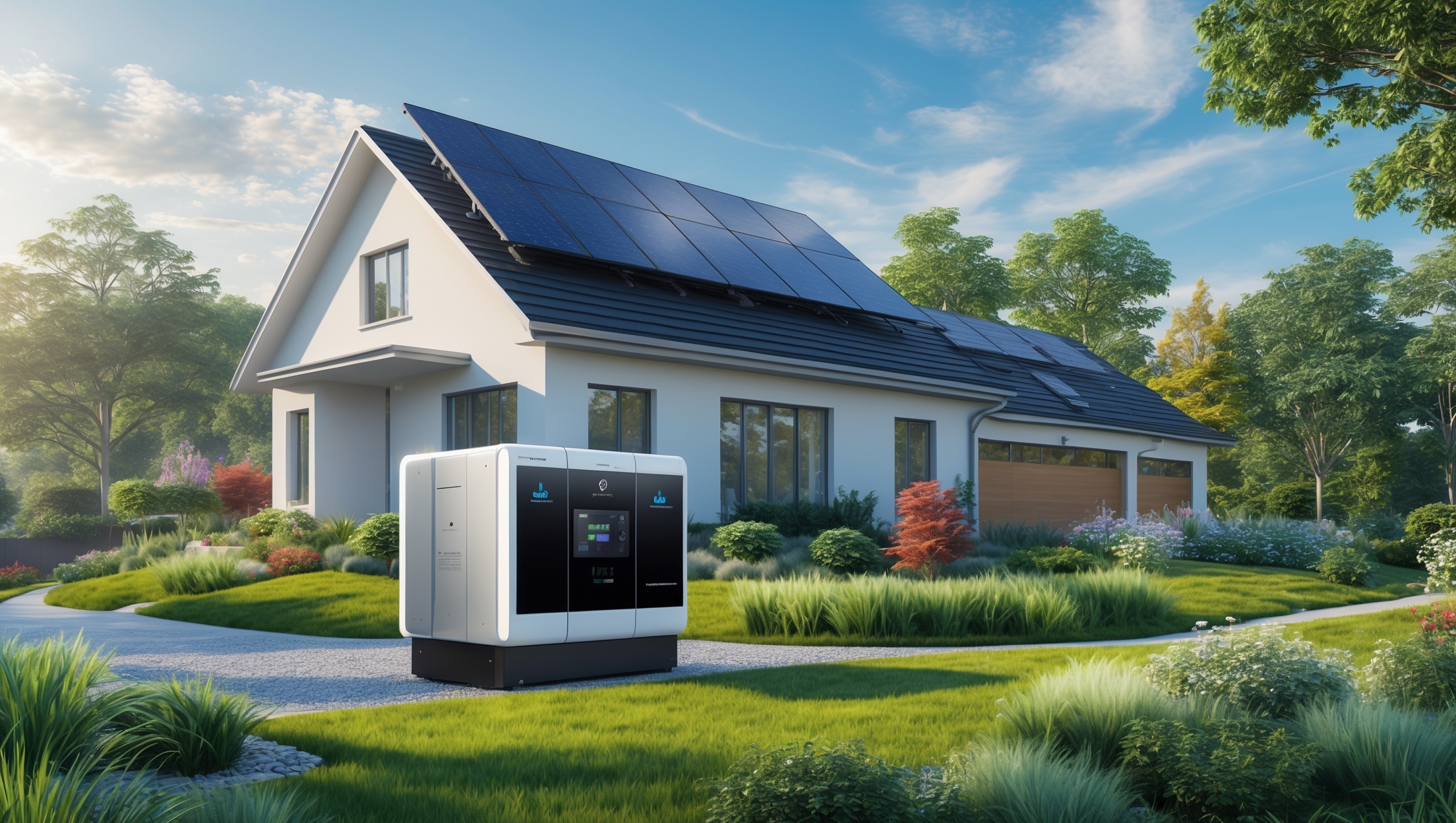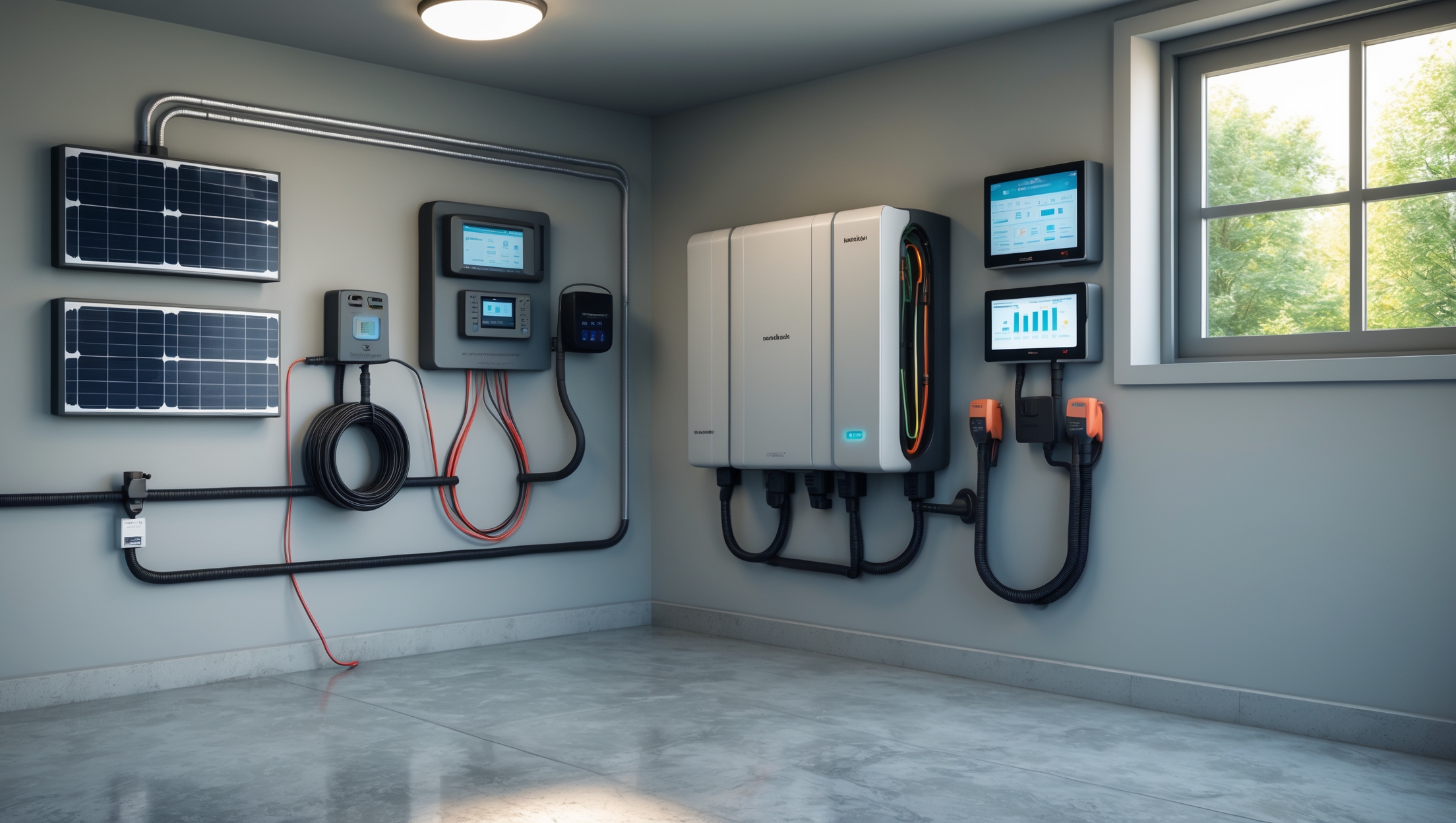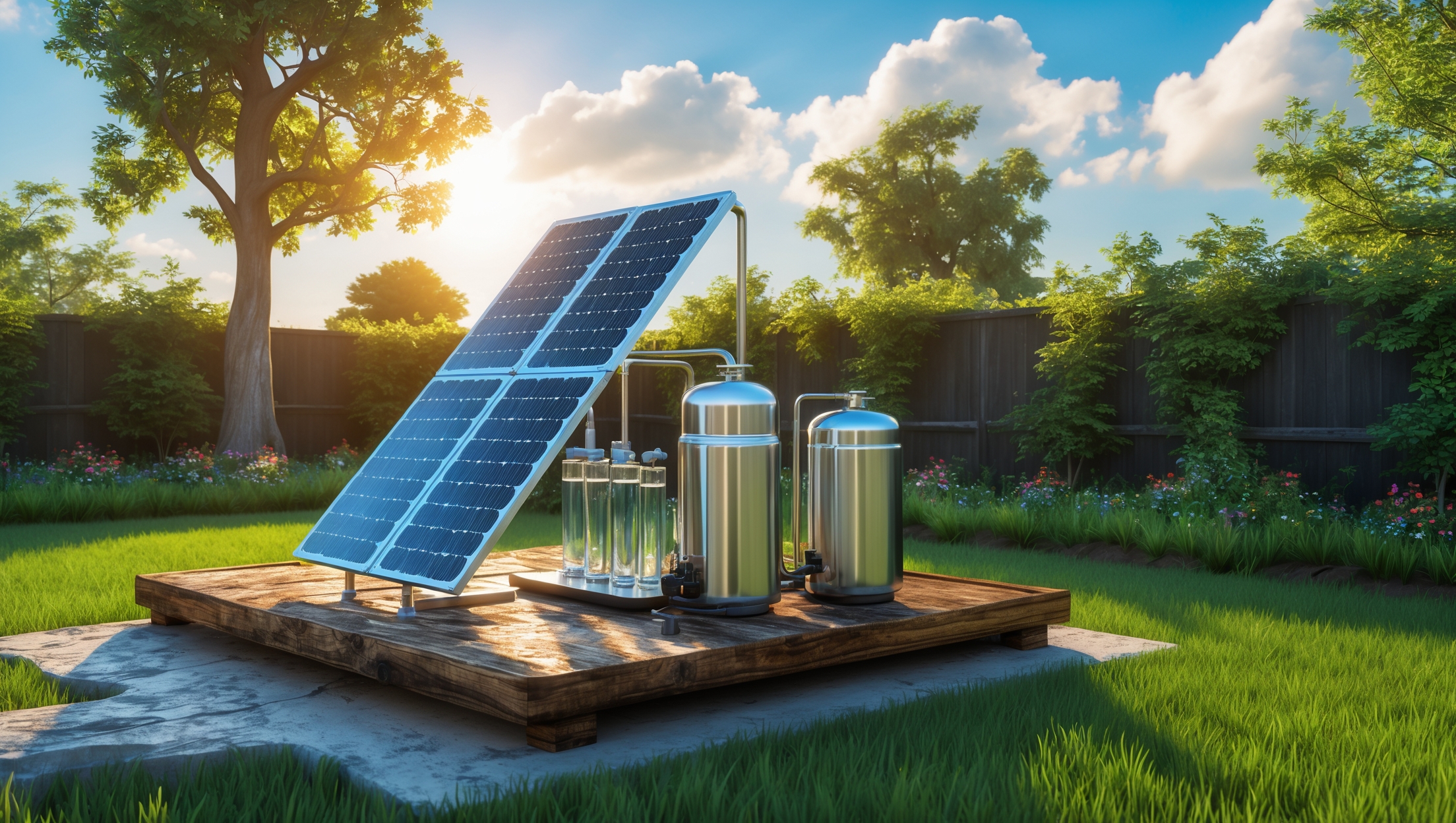Introduction: Hydrogen Fuel Cells and the Future of Home Energy
As the world searches for cleaner and more sustainable energy solutions, hydrogen fuel cells have emerged as a promising technology for both large-scale applications and residential energy systems. Despite their growing presence in discussions about green technology and future energy, hydrogen fuel cells are often misunderstood, leading to hesitation among homeowners and the perpetuation of outdated myths. This article aims to provide clarity by debunking the most common misconceptions about hydrogen fuel cells in home settings. We’ll explore how these systems actually work, address prevalent safety concerns, break down the costs involved, and explain their real role in the broader landscape of sustainable living. By the end of this post, you’ll have a clear, fact-based understanding of hydrogen fuel cells and whether they’re a viable option for your household’s energy needs.
Understanding Hydrogen Fuel Cells: How Do They Work?
The Basics of Hydrogen Power
Hydrogen fuel cells generate electricity through an electrochemical reaction between hydrogen and oxygen, producing only water and heat as byproducts. The key components include:
- Anode: Where hydrogen gas is supplied and split into protons and electrons.
- Cathode: Where oxygen combines with the protons and electrons to form water.
- Electrolyte membrane: Allows protons to pass while blocking electrons, forcing electrons through an external circuit to generate usable electricity.
In residential applications, fuel cells can operate continuously as long as hydrogen is supplied, making them suitable for backup power, off-grid living, or as part of a hybrid renewable system.
Types of Hydrogen Fuel Cells for Homes
- Proton Exchange Membrane Fuel Cells (PEMFC): Compact, efficient at lower temperatures, and suitable for residential use.
- Solid Oxide Fuel Cells (SOFC): Operate at higher temperatures and offer higher efficiency but are less common for home installations due to complexity.
Myth 1: Hydrogen Fuel Cells Are Too Dangerous for Home Use
Origins of the Safety Concern
The idea that hydrogen is inherently unsafe stems from its flammability and high-profile accidents, such as the Hindenburg disaster. However, modern hydrogen systems are engineered with multiple safety layers and strict regulations, making them safe for domestic use.
Modern Safety Protocols
- Leak detection sensors: Integrated systems immediately shut down and vent if a leak is detected.
- Pressure regulation: Tanks are designed to handle much higher pressures than they typically encounter.
- Ventilation standards: Installations require adequate ventilation to disperse any leaked hydrogen safely.
- Certified installers: Only trained professionals can install and maintain residential hydrogen systems.
Statistically, hydrogen fuel cell systems have a safety record comparable to, and in some cases better than, traditional natural gas systems. The technology is mature and well-regulated.
Myth 2: Hydrogen Fuel Cells Are Prohibitively Expensive
Breaking Down the Real Costs
It’s true that hydrogen systems were once prohibitively expensive for homeowners. However, advancements in manufacturing, increased adoption, and government incentives have significantly reduced costs. A typical residential hydrogen fuel cell system (5 kW) may cost between $20,000 and $35,000, including installation. While this is higher than solar panels, the gap is closing, and operational costs are often lower due to high efficiency and minimal maintenance.
- Upfront costs: Purchase of the fuel cell stack, storage tanks, and installation.
- Operational costs: Hydrogen fuel (which can be sourced or produced at home via electrolysis), routine inspections.
- Incentives: Many countries and states offer substantial rebates, tax credits, and grants for hydrogen system installations.
Cost Comparison: Hydrogen vs. Other Home Energy Solutions
- Solar PV: Lower upfront costs, but storage (batteries) adds significant expense for off-grid reliability.
- Diesel generators: Lower initial cost but higher fuel and maintenance costs, plus environmental drawbacks.
- Natural gas gensets: Moderate cost, but fossil fuel dependence and emissions issues.
Hydrogen fuel cells offer unique advantages in efficiency, reliability, and environmental impact, particularly for homes seeking full energy independence.
Myth 3: Hydrogen Fuel Is Hard to Source and Store
Hydrogen Sourcing Options
Hydrogen can be sourced in several ways:
- Delivered hydrogen: Delivered by suppliers in cylinders or tanks, similar to propane delivery.
- On-site production: Home electrolysis units can generate hydrogen from water using electricity (ideally from renewables).
- Community hydrogen hubs: Some regions are developing local hydrogen production and distribution centers for residential use.
Safe Storage Solutions
- Compressed gas tanks: Most common for residential applications; tanks are rigorously tested for durability and safety.
- Hydride storage: Advanced systems store hydrogen in solid materials, offering increased safety and compactness.
Hydrogen storage is no more complex than storing propane or natural gas and, when handled properly, poses no greater risk.
Myth 4: Hydrogen Fuel Cells Require Constant Maintenance
Maintenance Requirements
Contrary to belief, hydrogen fuel cells require minimal maintenance compared to combustion-based generators. Key points include:
- No moving parts: Most fuel cell stacks have no moving parts, reducing wear and service needs.
- Routine inspections: Annual professional inspections are recommended to check seals, connections, and sensors.
- Stack replacement: Fuel cell stacks may need replacement every 7-10 years, similar to battery replacement in solar systems.
Overall, the maintenance burden is low, especially when compared to traditional backup generators or fossil fuel systems.
Myth 5: Hydrogen Fuel Cells Can’t Be Integrated with Renewables
Synergy with Solar and Wind Systems
In fact, hydrogen fuel cells are an ideal companion to solar and wind energy. Excess renewable electricity can be used to produce hydrogen via electrolysis, which is then stored and converted back to electricity when renewable generation is low. This enables true 24/7 clean power and energy independence.
- Hybrid systems: Many modern home energy systems combine solar PV, battery storage, and hydrogen fuel cells for maximum flexibility.
- Grid support: Some configurations allow for grid export or backup during outages, providing both security and potential income.
Assessing Hydrogen Fuel Cells for Your Home: Practical Considerations
Is Your Home Suitable?
- Space requirements: Adequate space for storage tanks and the fuel cell unit, typically in a garage or outdoor enclosure.
- Local regulations: Check building codes and zoning laws for hydrogen installations in your area.
- Renewable integration: Optimal for homes with existing solar or wind generation.
- Energy needs: Most systems cover essential loads; full-home backup may require larger or multiple units.
Installation Process Overview
- Site assessment by certified professionals
- Permitting, based on local codes
- System installation and commissioning
- User training and ongoing support
Case Examples: Hydrogen Fuel Cells in Action
Off-Grid Cabin in Montana
A family installed a solar array paired with a 5 kW hydrogen fuel cell system. Excess solar power generates hydrogen for storage, ensuring uninterrupted power throughout snowy winters, with minimal maintenance required.
Suburban Home in California
This homeowner chose a hydrogen fuel cell as backup for frequent power outages. The system automatically kicks in during grid failures, supplying clean, silent power for essential appliances and medical equipment. The owner reports seamless operation and low annual upkeep costs.
Urban Pilot Project in Germany
A row of houses share a centralized hydrogen storage and fuel cell system, fed by rooftop solar panels. Residents benefit from stable, green electricity and reduced utility bills, demonstrating the viability of community-scale hydrogen solutions.
Frequently Asked Questions About Hydrogen Fuel Cells
- How long does a hydrogen fuel cell system last?
Most systems last 10–15 years with minimal maintenance; stack replacement may be required after 7–10 years. - Are hydrogen fuel cells noisy?
No, they operate almost silently—much quieter than combustion generators. - Can I produce my own hydrogen at home?
Yes, with an electrolyzer powered by electricity (preferably from renewables), you can produce hydrogen on-site for storage and use. - What happens if I run out of hydrogen?
The system simply shuts down safely; there’s no risk of explosion or damage. - Can hydrogen fuel cells power an entire home?
Yes, with the right system size and adequate hydrogen supply, they can supply all household electricity needs.
Conclusion: The Real Role of Hydrogen Fuel Cells in Sustainable Living
Hydrogen fuel cells are no longer just a futuristic concept—they are a practical, safe, and increasingly affordable option for homeowners committed to sustainable living. While not every home will be an ideal candidate, advancements in technology, expanding supply chains, and supportive policies have transformed hydrogen fuel cells into a viable component of residential energy systems. By dispelling persistent myths about safety, cost, sourcing, maintenance, and compatibility with renewables, we can make informed decisions about the true potential of hydrogen in our homes.
For those seeking reliable, clean backup power or a path toward full energy independence, hydrogen fuel cells deserve serious consideration. When integrated with solar or wind power, they provide unmatched flexibility and long-term sustainability. As the market continues to mature, prices will drop further, and community-scale solutions will become more accessible, making this technology a cornerstone of future energy landscapes.
In conclusion, don’t let outdated misconceptions hold you back. Evaluate your home, research local incentives, and consult with qualified professionals to see if hydrogen fuel cells are right for your sustainable living journey. The future of clean, resilient home energy is closer than you think—and hydrogen is ready to play its part.




You mention that hydrogen fuel cells produce only water and heat as byproducts, but how is the excess heat managed in a typical home setup? Could that heat be used for anything practical, like home heating or hot water?
In a typical home hydrogen fuel cell system, the excess heat generated can indeed be put to practical use. Many setups use what’s called combined heat and power (CHP), where the heat from the fuel cell is captured and used for space heating or to provide hot water. This improves overall efficiency by making use of energy that would otherwise go to waste.
The article breaks down both Proton Exchange Membrane and Solid Oxide fuel cells. If someone wanted to install a home system today, what are the key differences in terms of maintenance, lifespan, and the kind of hydrogen supply needed?
Proton Exchange Membrane (PEM) fuel cells generally require less maintenance and start up quickly, but their lifespan is a bit shorter—typically 5 to 10 years. They use high-purity hydrogen, often supplied in pressurized tanks. Solid Oxide Fuel Cells (SOFCs) last longer (up to 15 years), but they run at higher temperatures and need more regular checks for wear. SOFCs can use various hydrogen sources, even from natural gas or biogas, making their fuel supply a bit more flexible.
Thinking as a parent with a tight budget, are there any incentives, rebates, or government programs in the US that help offset the high upfront costs of installing a hydrogen fuel cell in a typical house?
Yes, there are some incentives in the US that can help reduce the upfront cost of installing a hydrogen fuel cell at home. The federal government offers the Residential Energy Efficient Property Credit, which can cover a portion of the installation cost for qualified fuel cell systems. Some states and local utilities also provide rebates or tax credits for clean energy technologies. It’s a good idea to check with your state energy office or utility provider to see what specific programs are available in your area.
If someone is interested in adding hydrogen fuel cells as part of a hybrid system with solar or wind, what are the main things they need to plan ahead for—like hookups, space requirements, or local regulations?
When planning a hybrid system with hydrogen fuel cells and solar or wind, consider the space for storing hydrogen safely and the equipment layout. You’ll need compatible electrical hookups and possibly a dedicated area for the fuel cell and storage tanks. Check local regulations regarding hydrogen storage and handling, as permits or inspections may be necessary. Also, make sure your installer is experienced with integrating these systems to ensure safe and efficient operation.